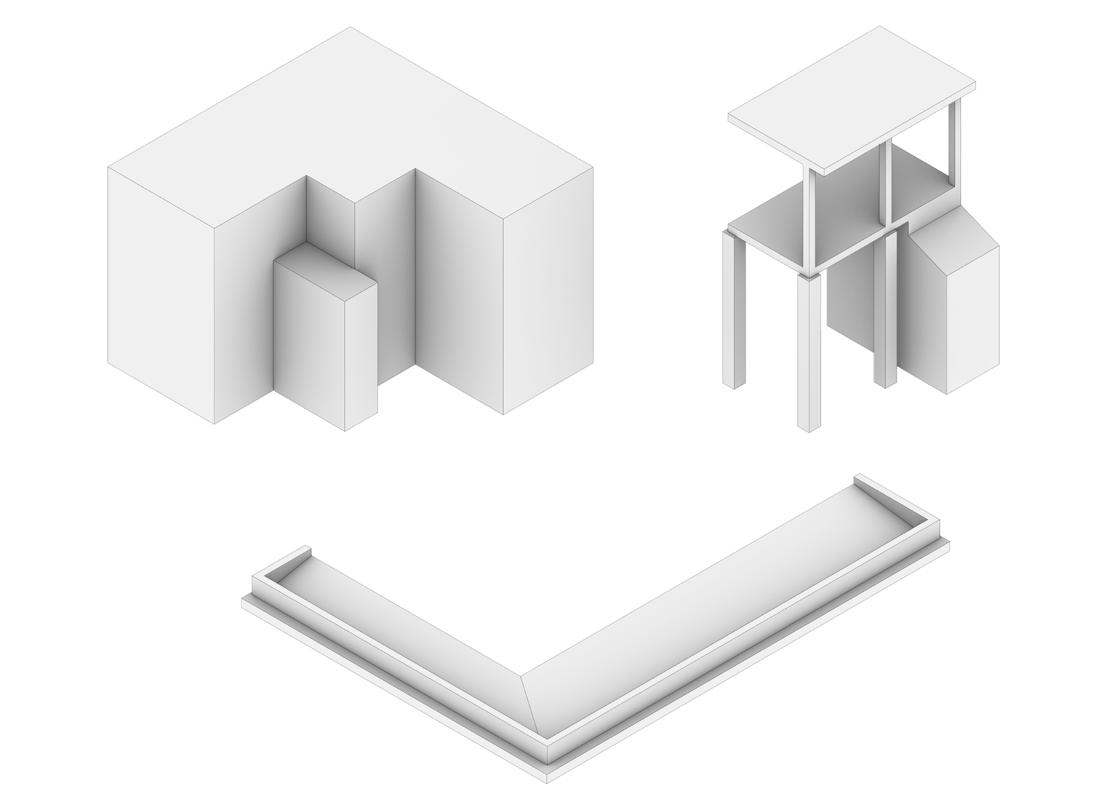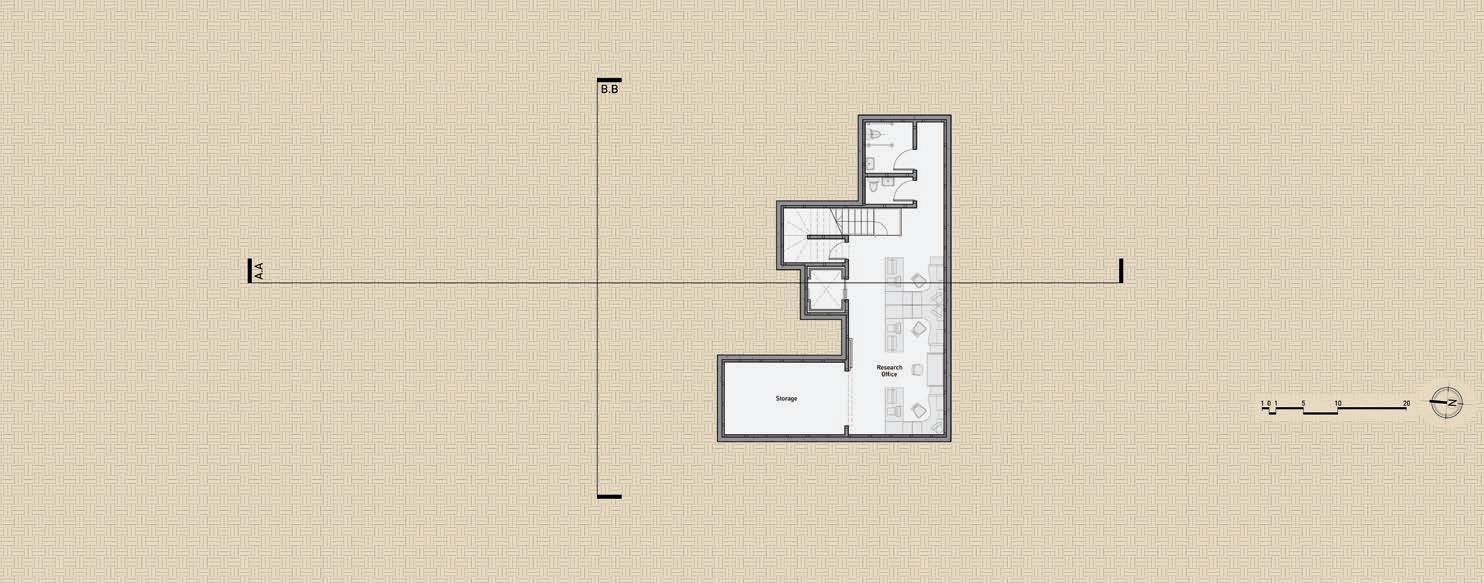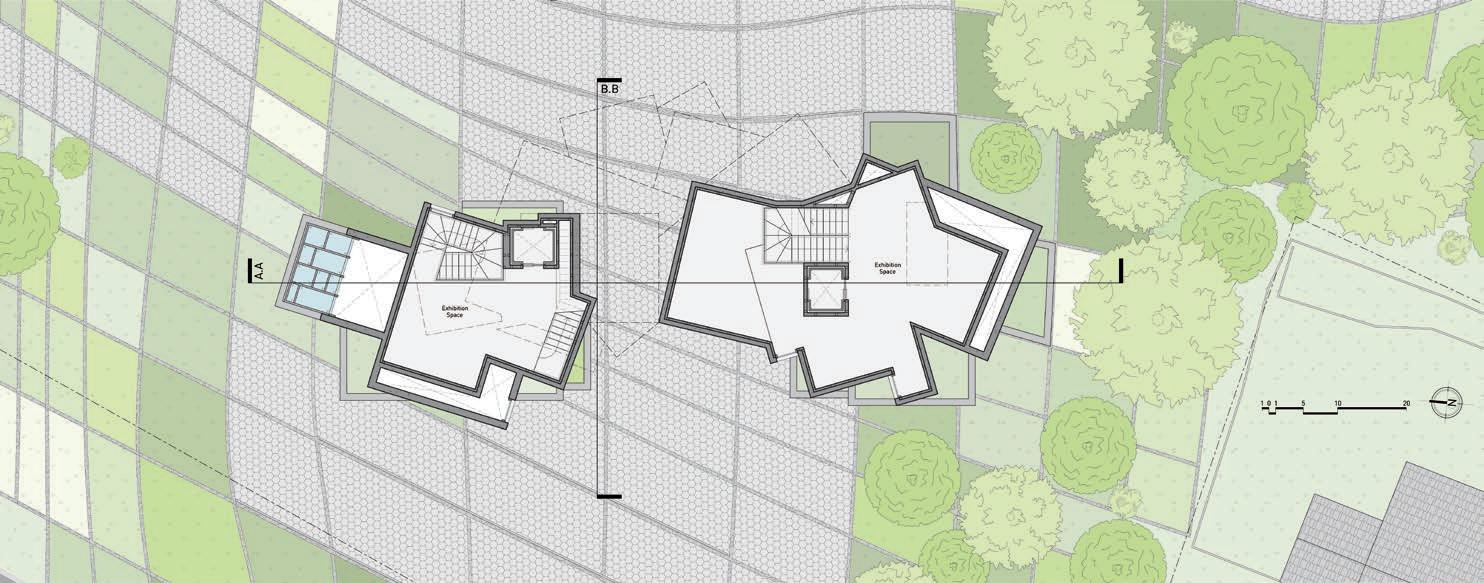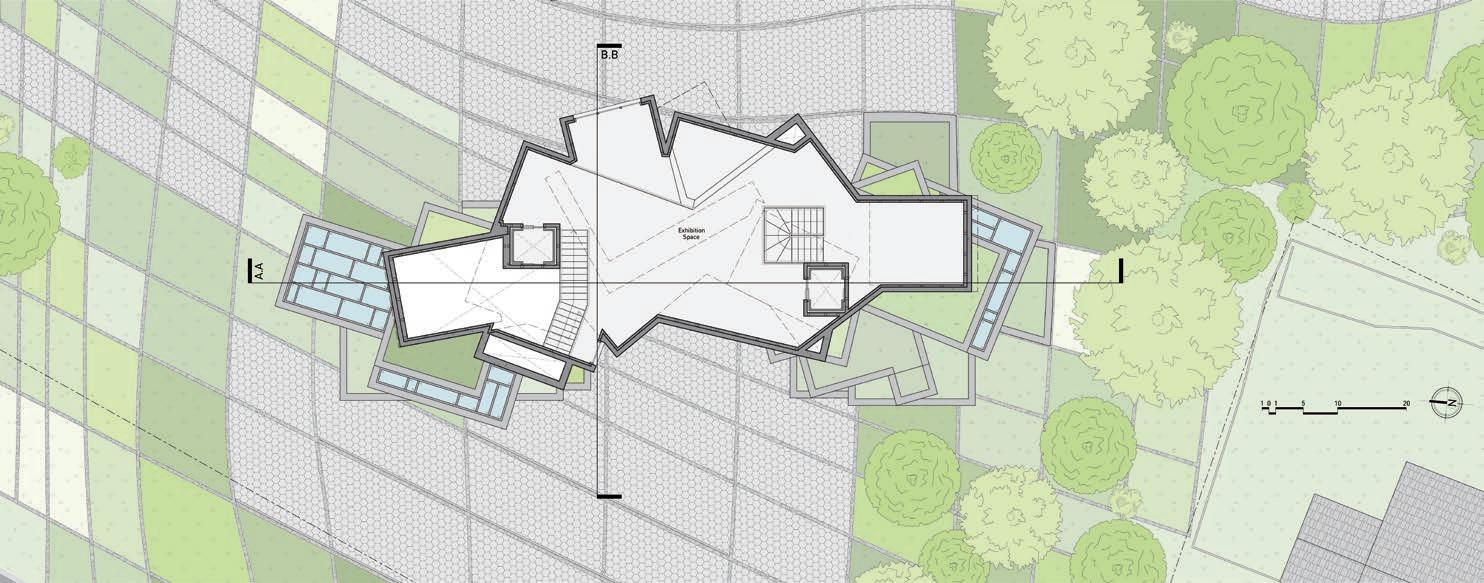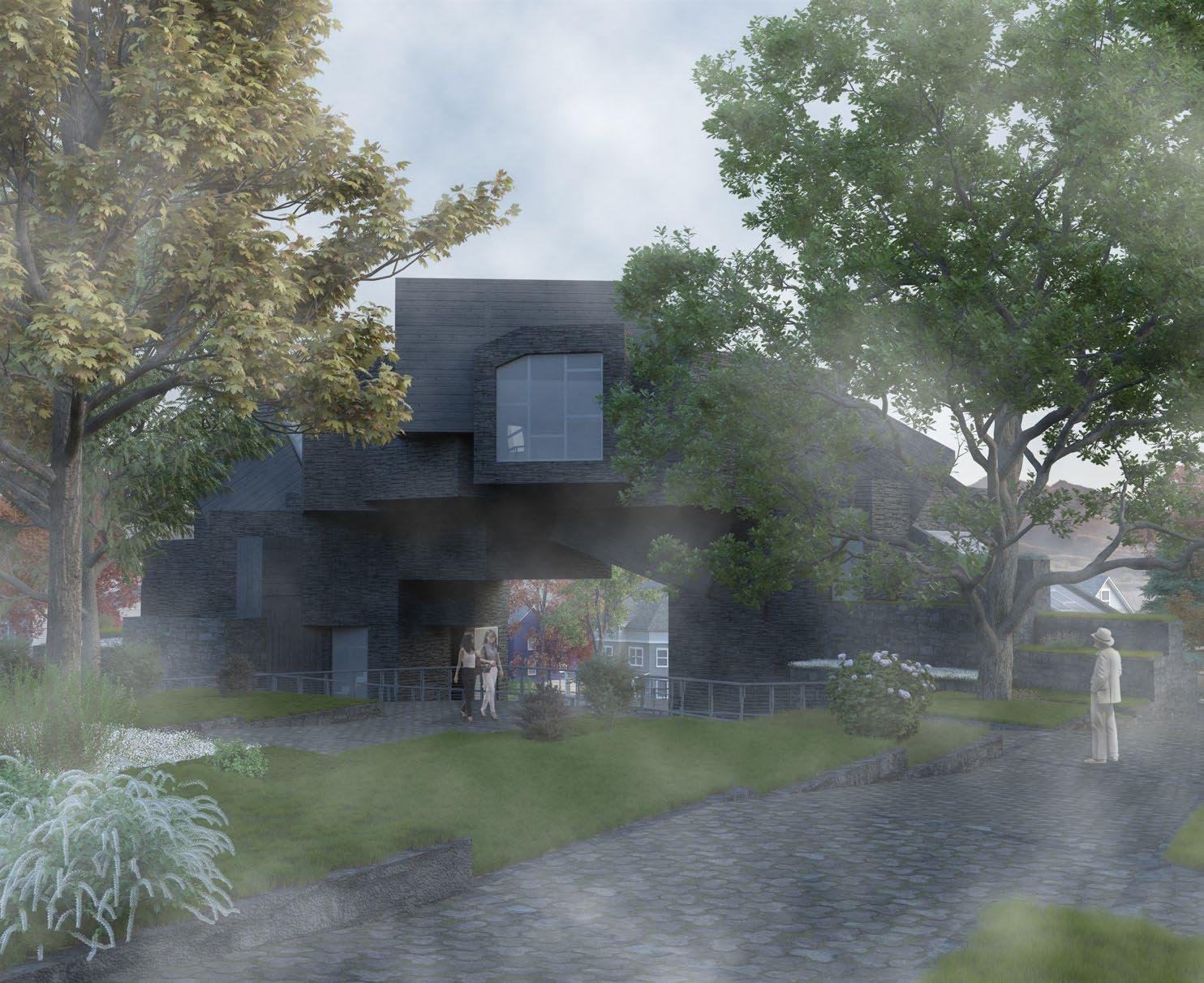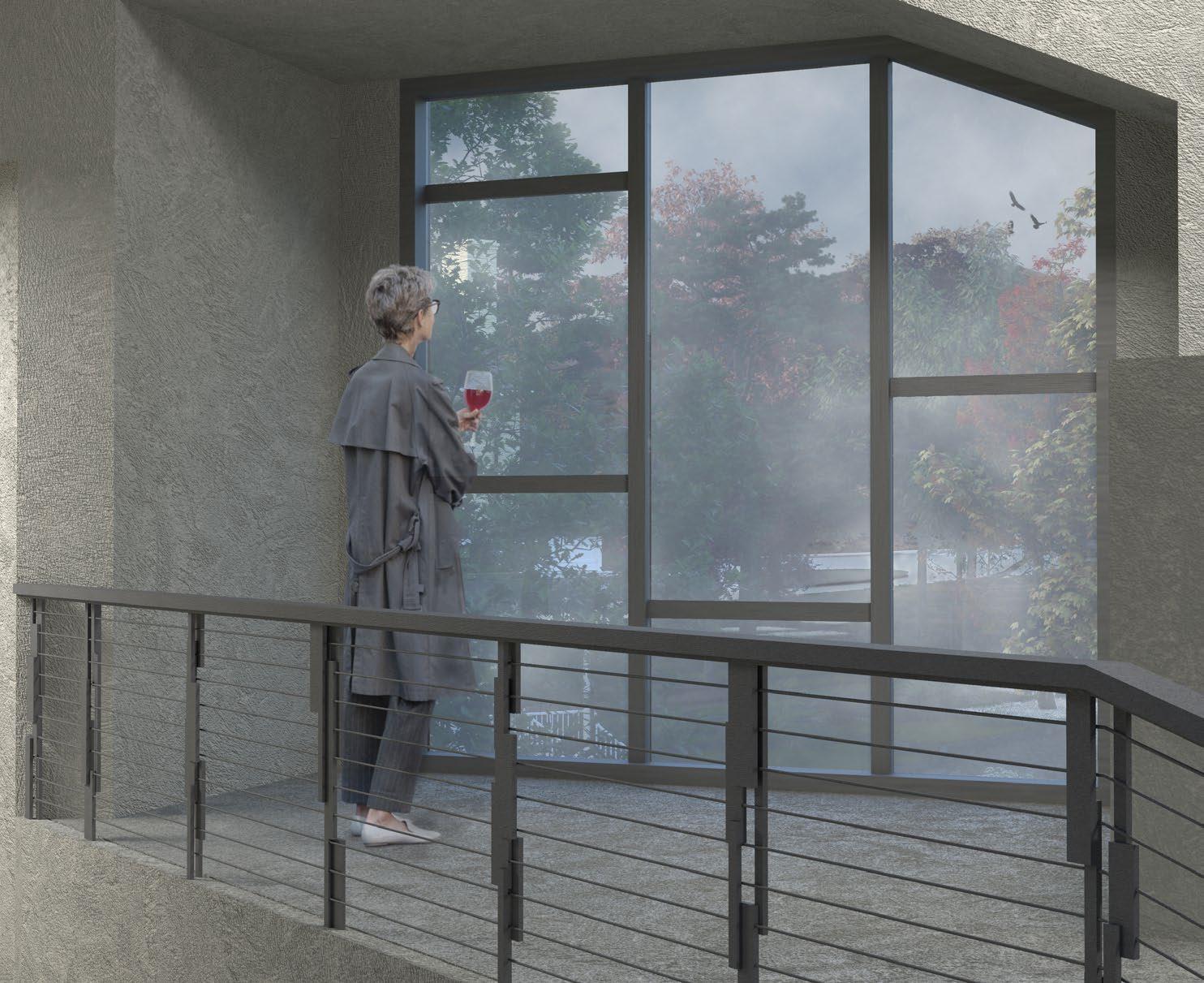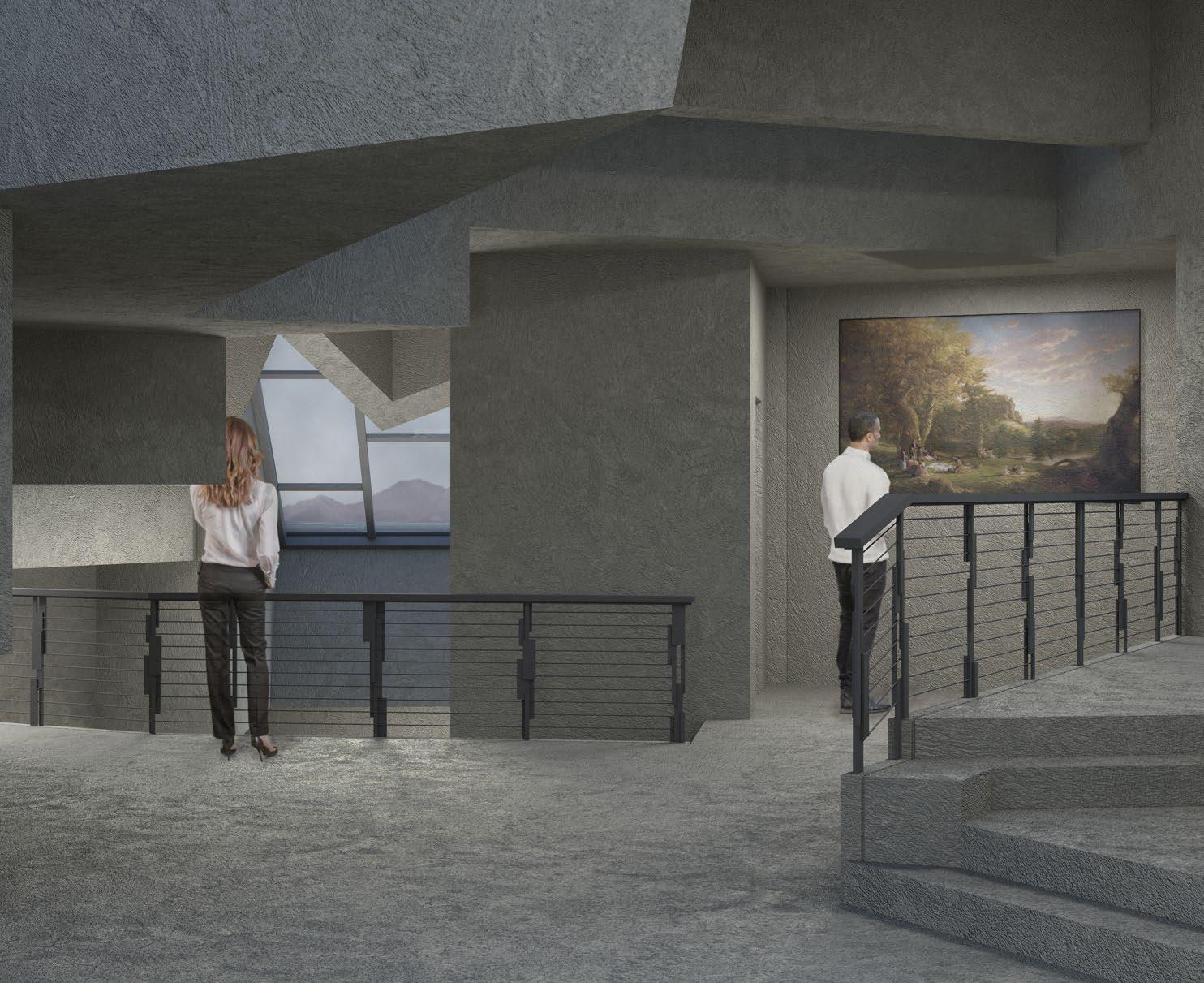
1 minute read
THE REPRESSED HISTORY OF NATURE
CRITIC: JILLIAN CRANDALL DESIGN STUDIO 3 FALL 2022
The building must not simply sit on its site, it must become one with it. The site must not simply remain “as it naturally was,” as there is no such thing. Both are constructions of man and both must be made to work in harmony. Only together is a complete experience created. This experience must acknowledge the history of the site and its inhabitation. Repressed histories must be unearthed instead of further buried beneath new construction. Failure to do so is no less than violence against those histories, against those inhabitants, and against the site.
Advertisement
The Thomas Cole site has deep, historic connections with nature that deserve to be expressed. The site has been divided by an organizing grid, with each unit containing species of native grasses and wildflowers. Visitors navigate this grid through a web of interconnected ramped pathways. Out of this grid rises a windswept arch, framing a dedicated entrance to the complex from the street. The tumbled arch houses a cafe, rest areas, and new exhibition spaces. A research office is located in the basement level, dedicated to unveiling the history of repressed groups in the area that have since been forgotten.
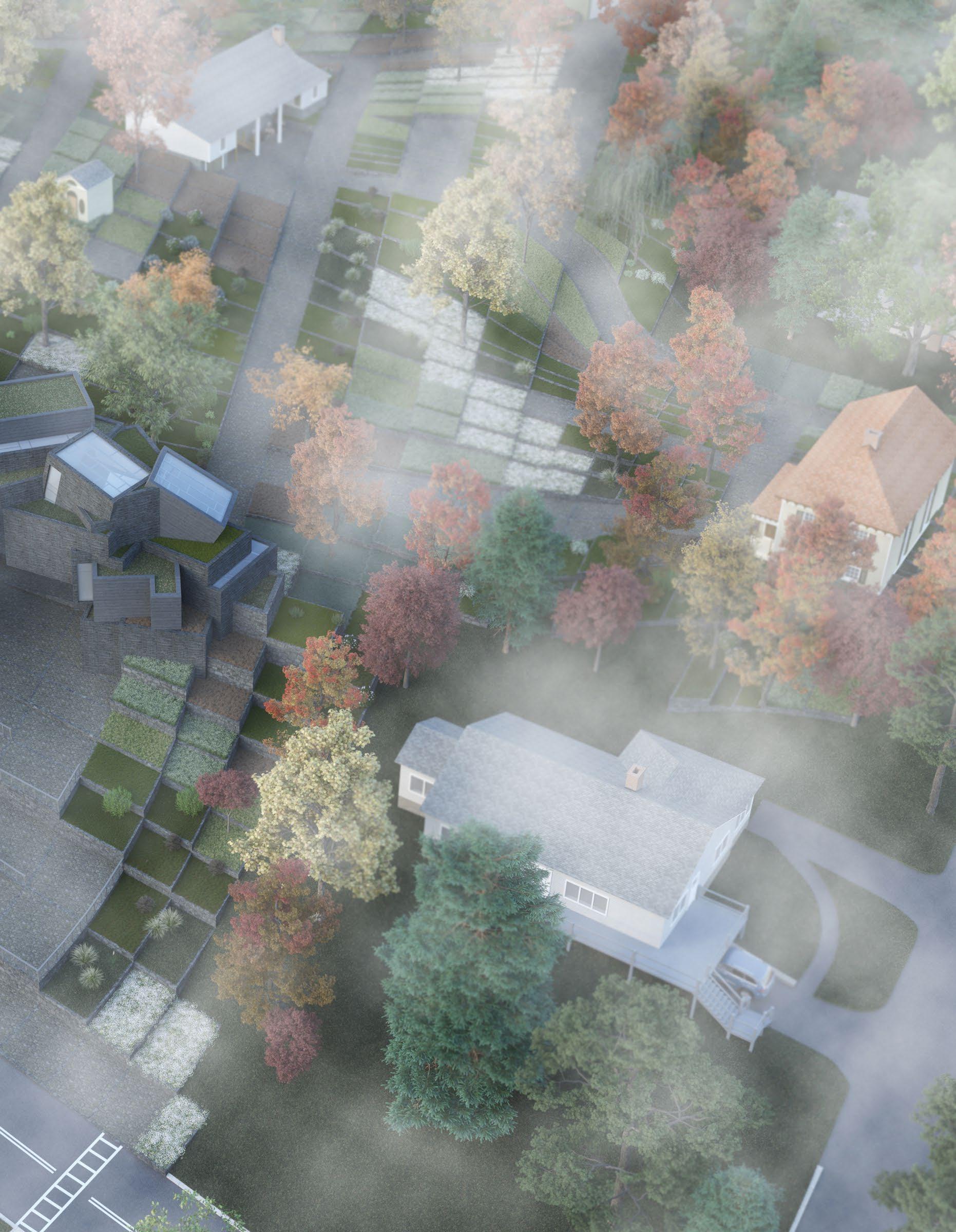
Above: Generative Muse Collage
Below: Parti Generation grid
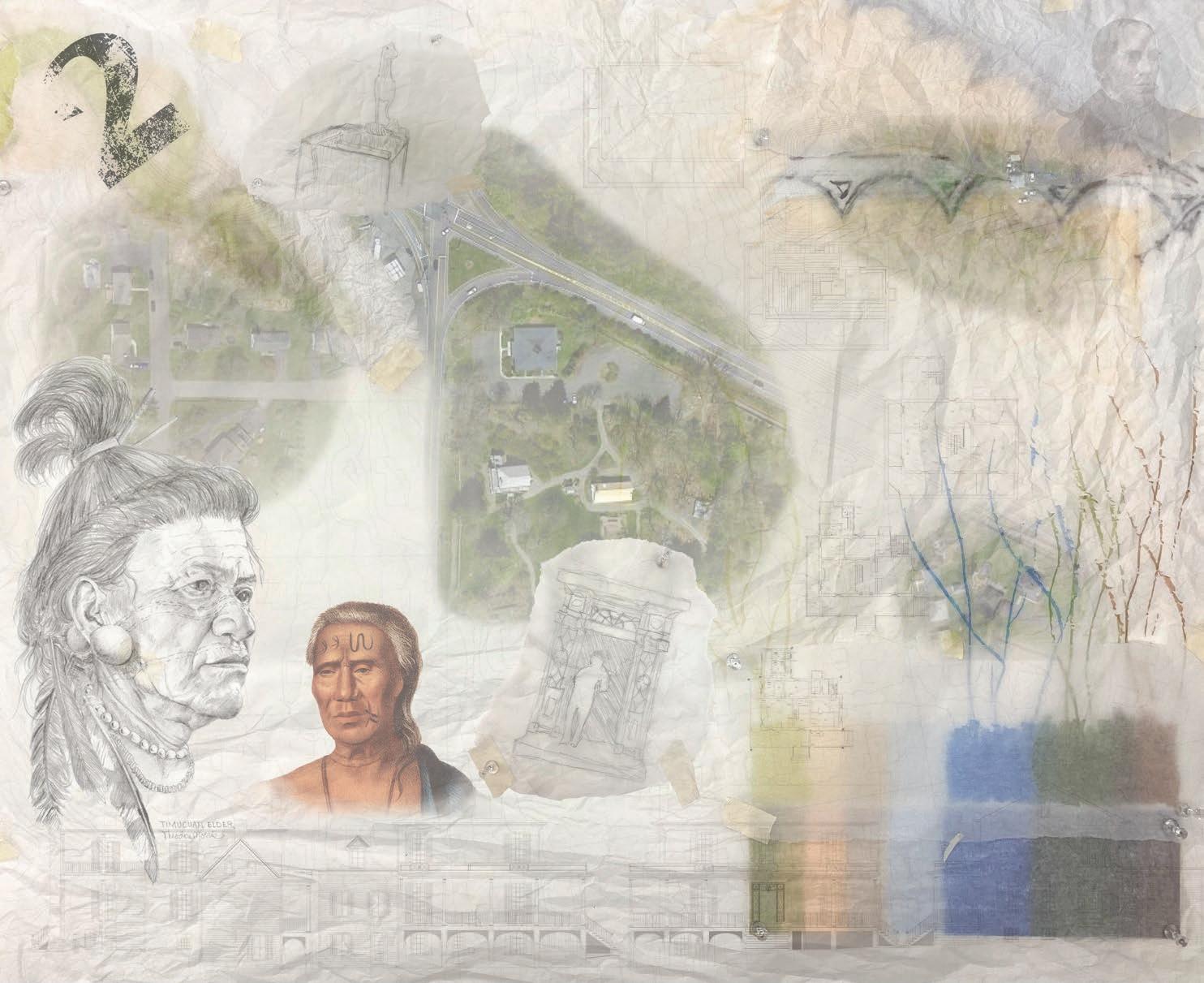
Lower Left: Selected Parti from Generation grid

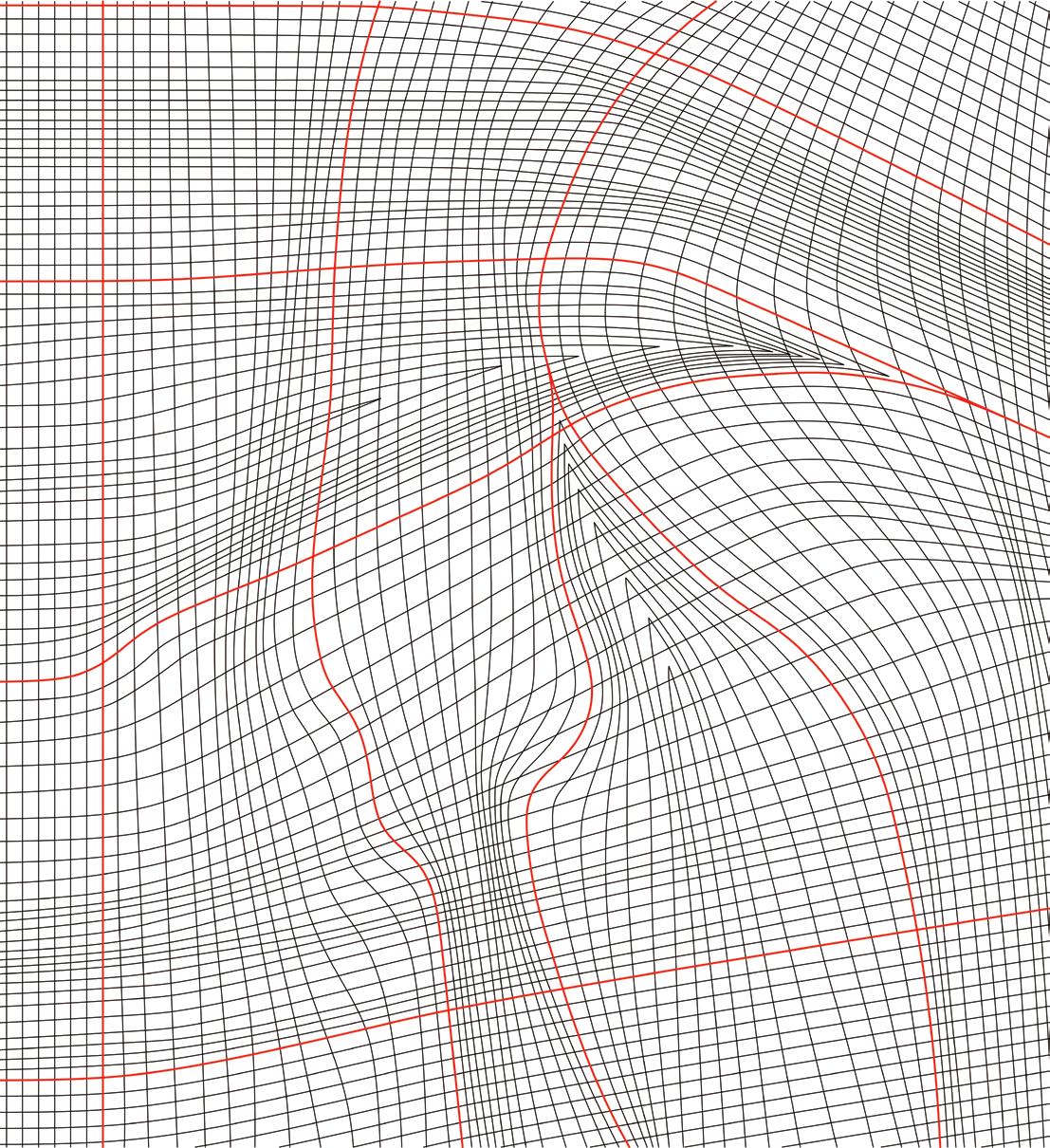
Lower Right: Cole House components used for generation studies
